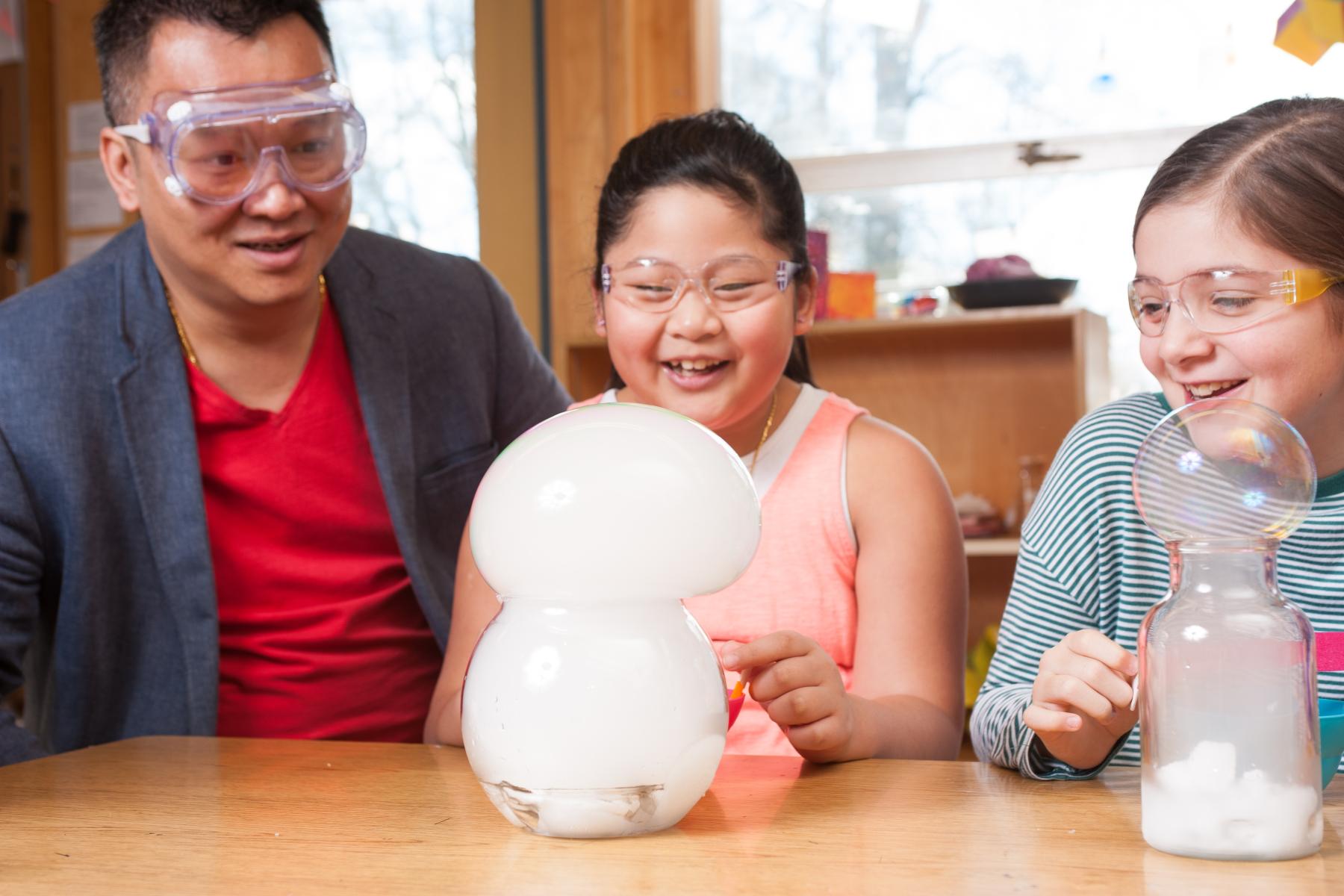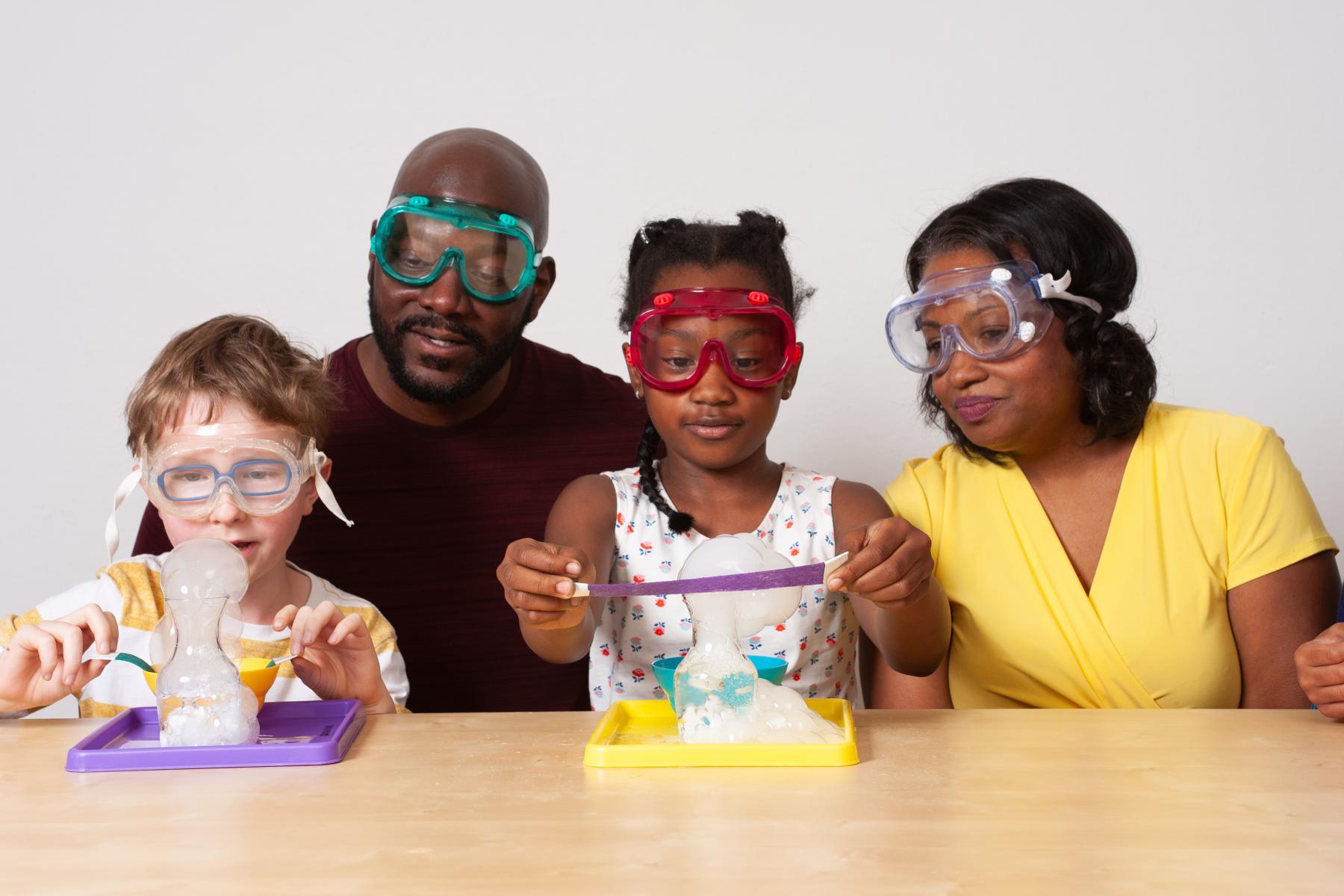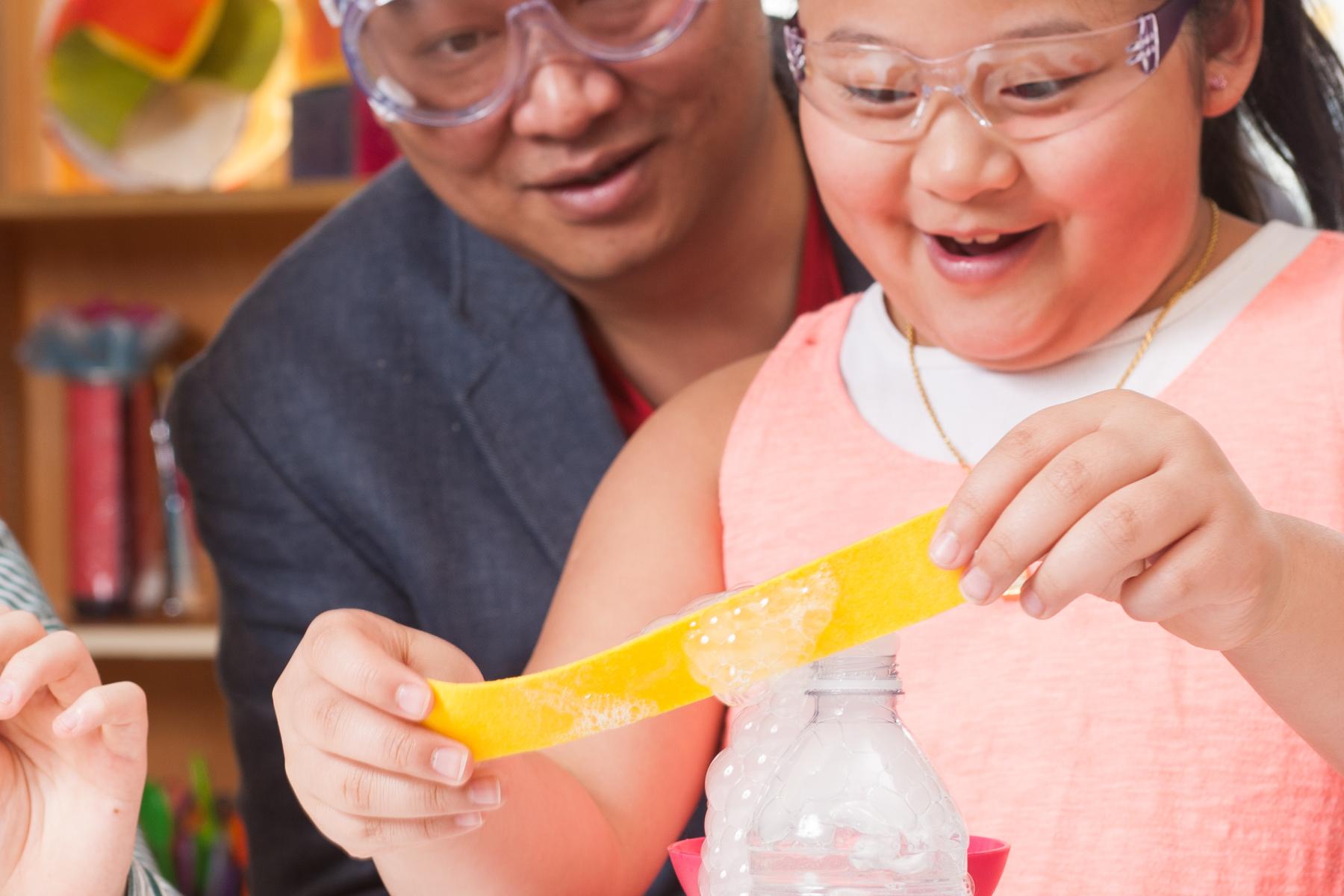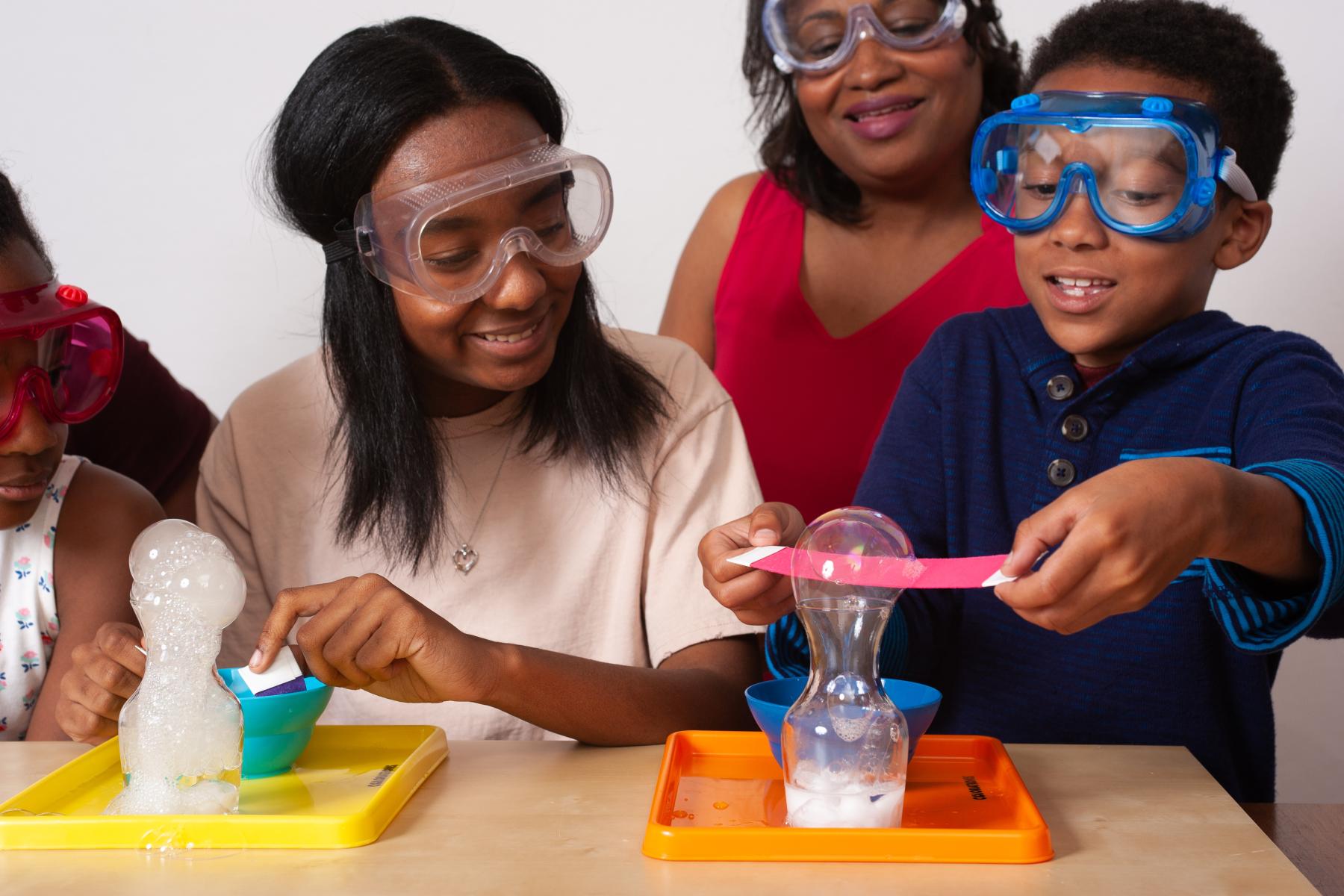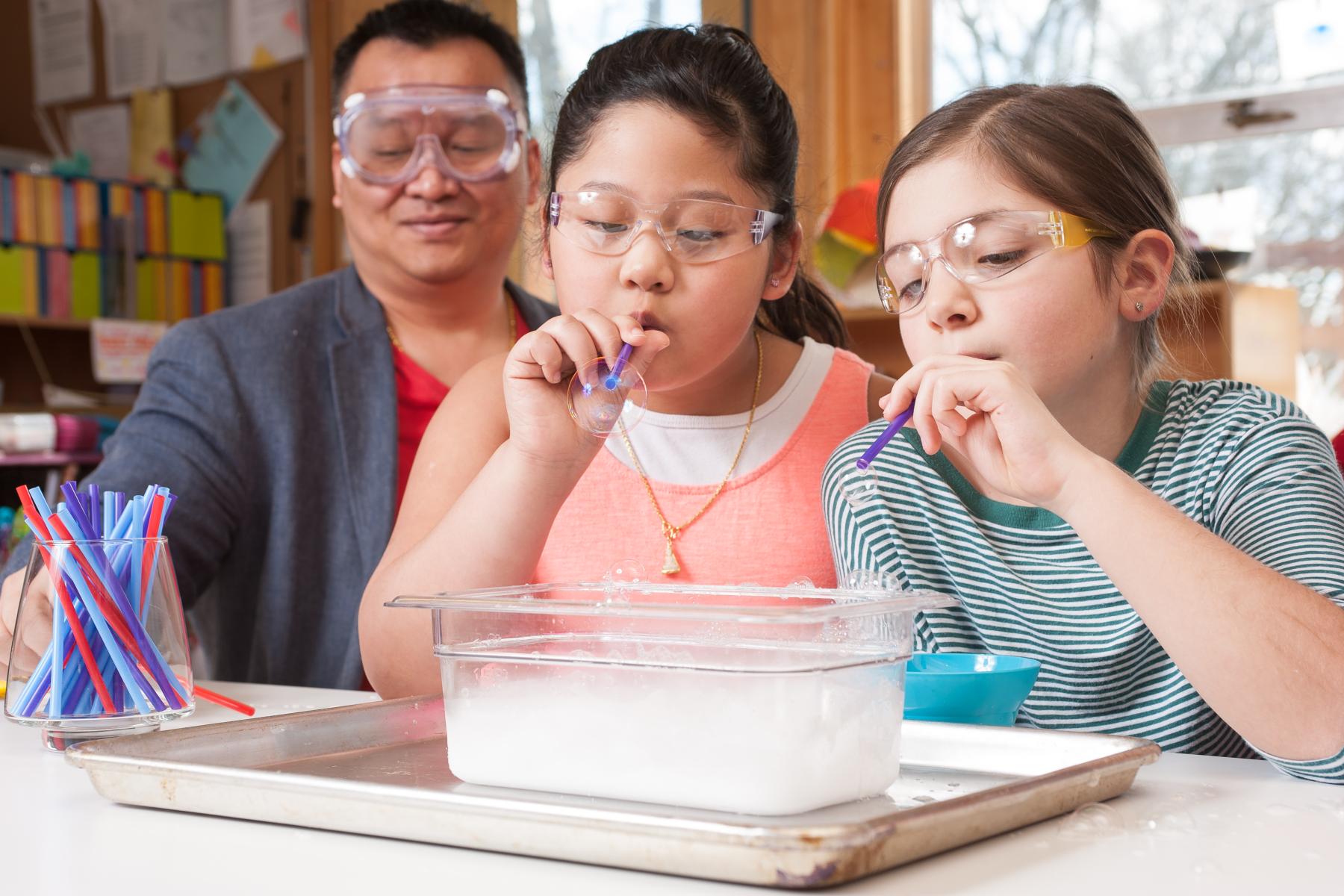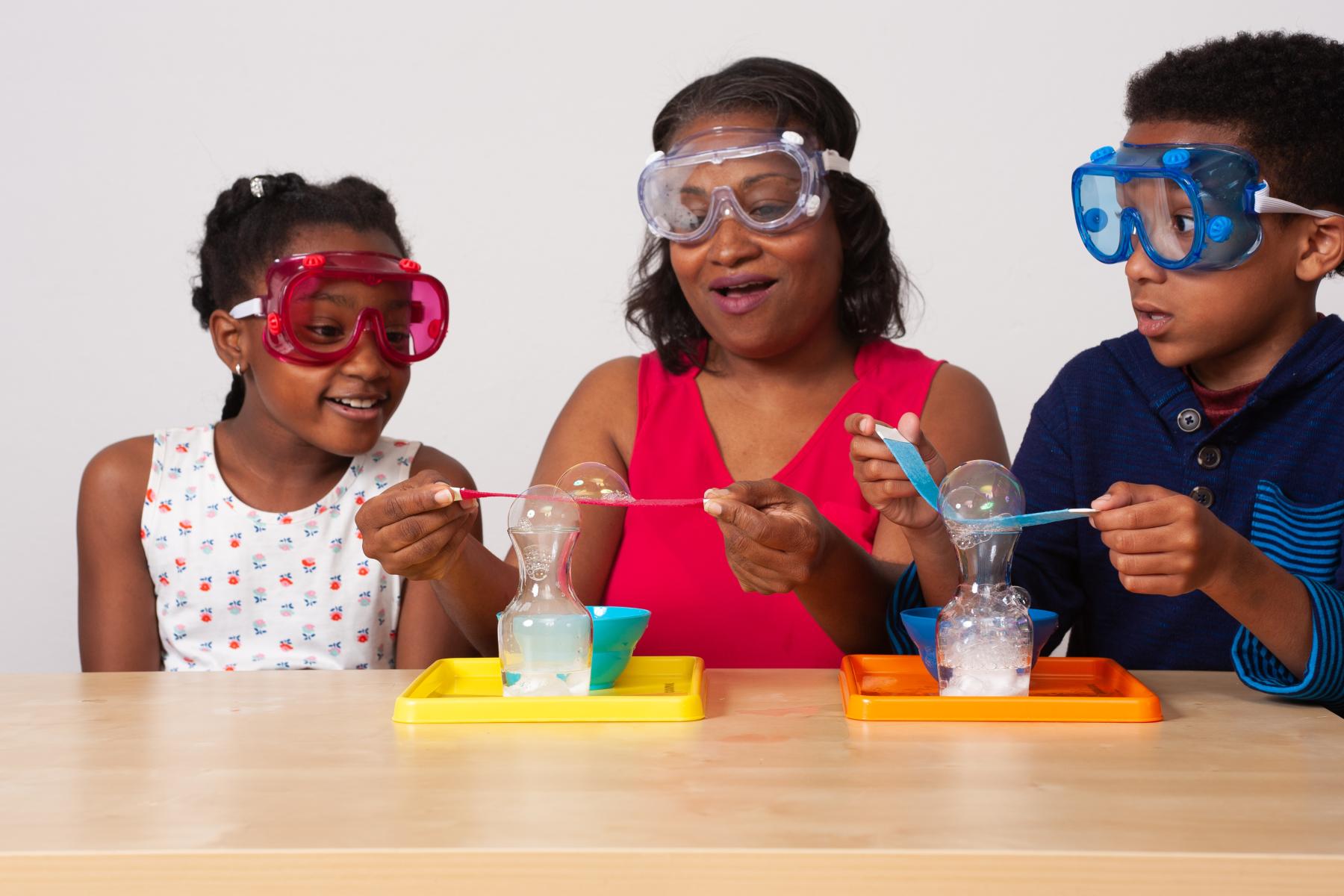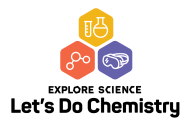DESCRIPTION
"Sublimation Bubbles" shows how some solid materials can sublimate directly into their gaseous form. Participants use water to observe dry ice sublimating into gaseous carbon dioxide, and then capture the gas in soapy bubbles.
DESCRIPTION
"Sublimation Bubbles" shows how some solid materials can sublimate directly into their gaseous form. Participants use water to observe dry ice sublimating into gaseous carbon dioxide, and then capture the gas in soapy bubbles.
TRAINING VIDEOS
OBJECTIVES
BIG IDEA
Chemistry can help us understand our world and learn about how materials behave and change.
Chemists use tools to discover and make new things.
LEARNING GOALS
Learners will develop positive attitudes toward learning about chemistry:
- Learners will increase their feelings of interest in chemistry through hands-on exploration and observation of chemistry concepts and phenomena.
- Learners will increase their sense of self-efficacy related to chemistry through hands-on interaction with exciting materials, and by successfully understanding how to do the activity.
DOWNLOAD FILES
- Sublimation Bubbles activity guide (PDF)
- Sublimation Bubbles dry ice safety sheet (PDF)
- Sublimation Bubbles space info sheet (PDF)
- Sublimation Bubbles activity sign (PDF)
- Solid carbon dioxide (dry ice) Safety Data Sheet (PDF)
- Glycerin Safety Data Sheet (PDF)
- Soap solution Safety Data Sheet (PDF)
- Sublimation Bubbles facilitator guide (PDF)
- Sublimation Bubbles activity guide (Spanish) (PDF)
- Sublimation Bubbles activity sign (Spanish) (PDF)
- Sublimation Bubbles space info sheet (Spanish) (PDF)
Credits
Developed for the NISE Network with funding from the National Science Foundation under Grant Number DRL 1612482. Any opinions, findings, and conclusions or recommendations expressed in this material are those of the author(s) and do not necessarily reflect the view of the National Science Foundation. Any opinions, findings, and conclusions or recommendations expressed in this product are those of the authors and do not necessarily reflect the views of the Foundation.
Creative Commons Attribution Non-Commercial Share Alike 3.0 United States (CC BY-NC-SA 3.0 US).
View more details

NISE Network products are developed through an iterative collaborative process that includes scientific review, peer review, and visitor evaluation in accordance with an inclusive audiences approach. Products are designed to be easily edited and adapted for different audiences under a Creative Commons Attribution Non-Commercial Share Alike license. To learn more, visit our Development Process page.

